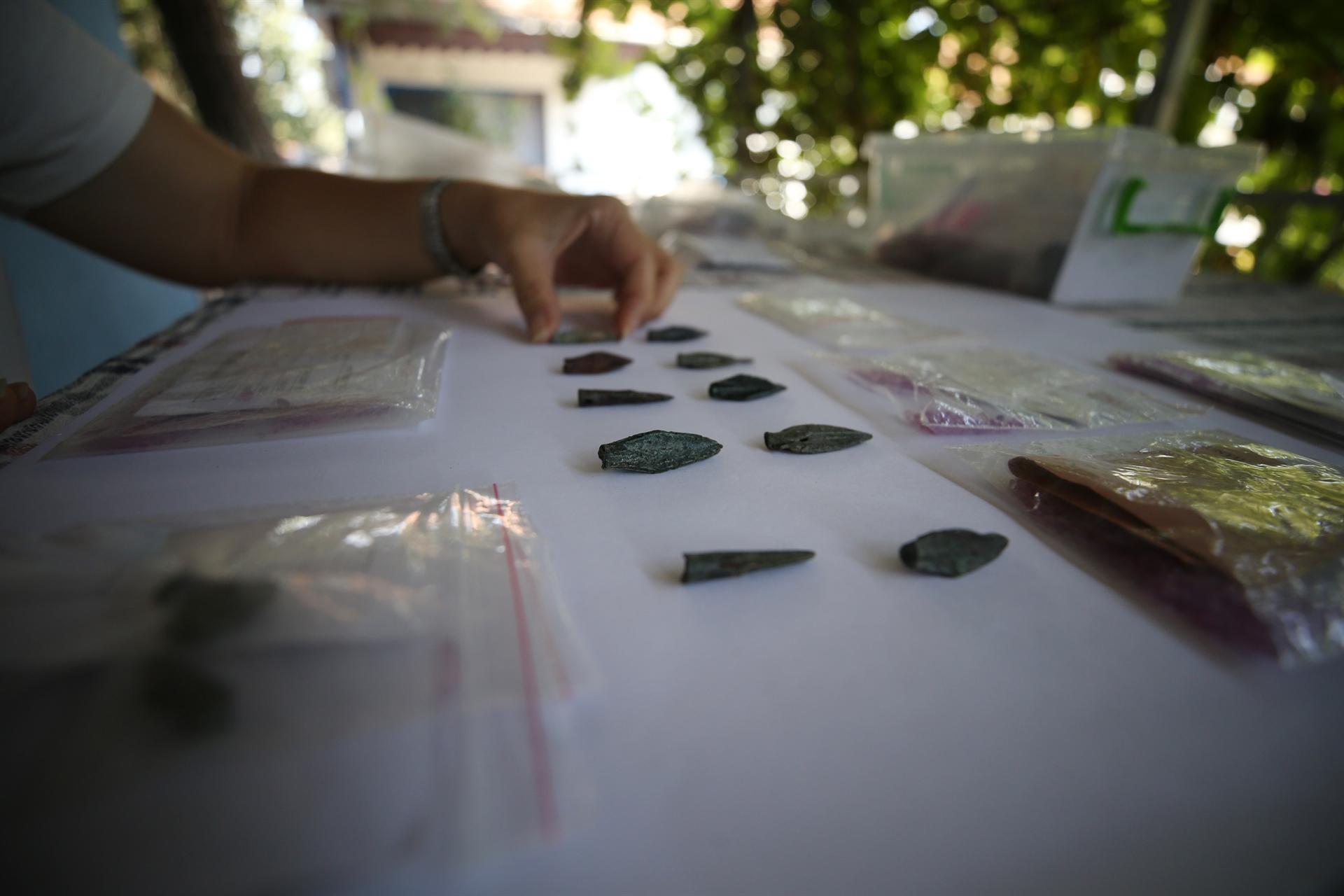
Arrowheads unearthed in Dascylium, an ancient city bearing the traces of many civilizations that ruled Anatolia in modern day Bandırma district of the western province of Balıkesir, provide important information on the war and hunting history of the region.
Archaeological excavations that started in 1954, but which were interrupted at various times, continue in Hisartepe, where the first settlements date back to 3,000 B.C.
About 500 arrowheads with two or three wings made of bronze and iron, which were unearthed in Dascylium in 35 years, give clues about their use with their structure and size.
Working on the metal weapons found in the city, Muğla Sıtkı Koçman University archeology department lecturer Özgün Kasar told state-run Anadolu Agency that the bronze arrowheads found in Dascylium were sleeve arrows.
Kasar said they unearthed 93 arrowheads from a grave during the 2012 excavation. “We think that these are related to the warrior character of one of the people in the grave,” she said.
Noting that they found other iron and bronze arrowheads and weapons such as daggers, Kasar said that armor scales used by soldiers to protect themselves from arrows were also among the finds.
Noting that they dated the armor scales to different centuries, Kasar said, “These types of armor were used at Dascylium in the Middle Ages. There are earlier examples. We know that rectangular armor scales were used in the 6th century B.C.”
Kasar also explained that they knew that Dascylium was a garden used by the Persians for hunting. Referring to the function of the arrowheads, Kasar said, “These arrows must have been used not only in war but also in hunting. We can see some deformations on the arrowheads, such as breaks in the barrel parts. These arrowheads may have been used especially in the war, and we can see the damage they received when they hit an armor or touched a stone when thrown. Some arrowheads were exposed to burning; cracks and breaks occurred on them.”
Kasar said the dateable arrowheads belong to the years when the Persians ruled the region.
Stating that the different forms of arrowheads are related to their functions and effects, Kasar said, “The two-winged arrowheads had broad wings and they may have been used to pierce the skin. The three-winged and sharp arrowheads were used to pierce armor.”
“We can say that their form, weight and size are related to the purpose of their use, and that these arrowheads were used both in war and hunting. Especially in the Persian period, there were more finds. We had the arrowheads analyzed and found that they have a large amount of lead because it increases the durability and weight. We do not have any solid data yet that arrowheads were produced here, but we can state that different metal finds may have been produced in Dascylium,” he added.